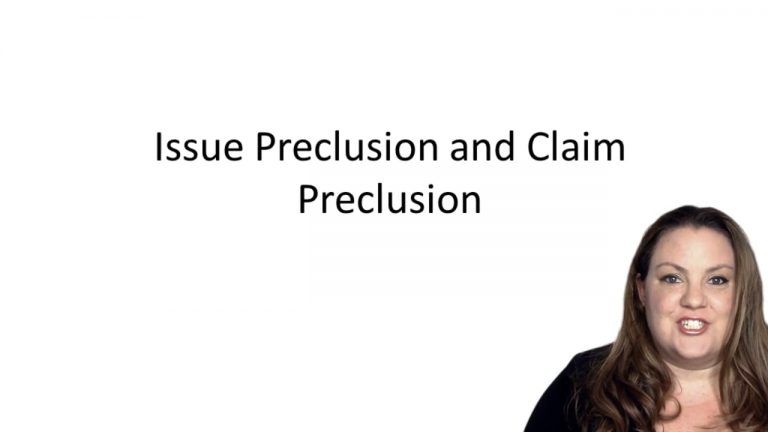SmartBrief
Confirm favorite deletion?
Civil Procedure Keyed to Babcock
Durfee v. Duke
Citation:
375 U.S. 106 (1963)Facts
Plaintiff Durfee sued Defendant Duke in Nebraska state court to quiet title on land between the Missouri River between Nebraska and Missouri. The Nebraska court’s subject matter jurisdiction depended on the land being in Nebraska. Defendant Duke contested jurisdiction but still litigated the case to the end. The Nebraska court found that the land was a part of Nebraska by avulsion, found jurisdiction proper, and ruled in favor of Plaintiff Durfee. Defendant Duke appealed and the Nebraska Supreme Court affirmed. Defendant Duke then sued in Missouri to quiet title claiming the land was in Missouri and that Nebraska did not have proper jurisdiction. The case was removed to federal court based on diversity of citizenship. The federal district court held that the land was in Missouri, but that res judicata applied and the judgement of the Nebraska Supreme Court controlled. The court of appeals reversed ruling that the Nebraska decision was not entitled to full faith and credit. The appellate court thus held that a Missouri court had the right to reconsider the Nebraska’s court’s subject matter jurisdiction. Plaintiff Durfee petitioned the Supreme Court of the United States for certiorari.
Only StudyBuddy Pro offers the complete Case Brief Anatomy*
Access the most important case brief elements for optimal case understanding.
*Case Brief Anatomy includes: Brief Prologue, Complete Case Brief, Brief Epilogue
- The Brief Prologue provides necessary case brief introductory information and includes:
Topic:
Identifies the topic of law and where this case fits within your course outline.Parties:
Identifies the cast of characters involved in the case.Procedural Posture & History:
Shares the case history with how lower courts have ruled on the matter.Case Key Terms, Acts, Doctrines, etc.:
A case specific Legal Term Dictionary.Case Doctrines, Acts, Statutes, Amendments and Treatises:
Identifies and Defines Legal Authority used in this case.
- The Case Brief is the complete case summarized and authored in the traditional Law School I.R.A.C. format. The Pro case brief includes:
Brief Facts:
A Synopsis of the Facts of the case.Rule of Law:
Identifies the Legal Principle the Court used in deciding the case.Facts:
What are the factual circumstances that gave rise to the civil or criminal case? What is the relationship of the Parties that are involved in the case.Issue(s):
Lists the Questions of Law that are raised by the Facts of the case.Holding:
Shares the Court's answer to the legal questions raised in the issue.Concurring / Dissenting Opinions:
Includes valuable concurring or dissenting opinions and their key points.Reasoning and Analysis:
Identifies the chain of argument(s) which led the judges to rule as they did.
- The Brief Prologue closes the case brief with important forward-looking discussion and includes:
Policy:
Identifies the Policy if any that has been established by the case.Court Direction:
Shares where the Court went from here for this case.
Topic Resources
Topic Videos
 10m 50s
10m 50s 3m 56s
3m 56sTopic Outline
